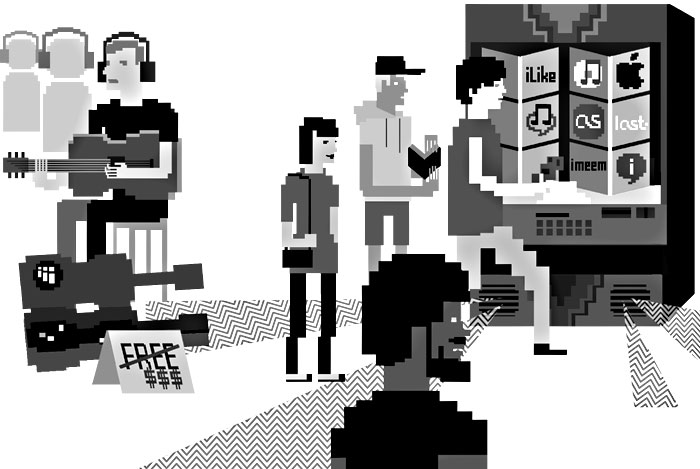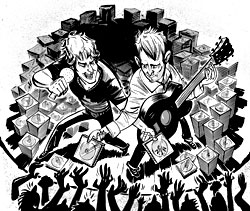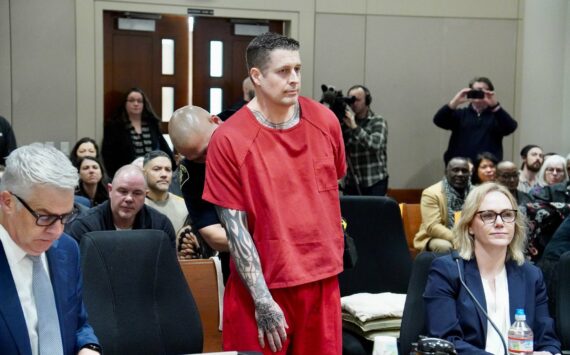10:32 a.m. Though she’s not scheduled to be interviewed for another half-hour, Nancy Pearl arrives downstairs with Lauren Silverberg from Sasquatch Books. “She’s a very time-oriented person,” says Silverberg later that day. “And she likes talking to people.”11:45 a.m. University Bookstore’s Events Coordinator, Stesha Brandon, starts talking about all of the things she has planned in September for Proust Was a Neuroscientist, by Jonah Lehrer. “We’re going to have food and Baroque music!” she screams. “And that author is only 25!” That author, mind you, is also an editor at Seed magazine and a Rhodes Scholar.12:20 p.m. While having a small $8.25 turkey sandwich in the oversized food court, I’m greeted by a member of the Random House sales staff who works exclusively with Barnes and Noble. He’s one of eleven members of the Random House staff whose sole job is to sell books to Barnes and Noble. Eleven! I say. He then starts talking with his friend from Barnes and Noble, a bookseller in charge of buying humor titles for the entire bohemoth chain.2:10 p.m. Seattle’s Timothy Egan, author of The Worst Hard Time, signs copies of his National Book Award-winning paperback, for fans. Considering that his book came out last year, there’s a considerable line–long enough for Carla Gray (who works for his publisher, Houghton Mifflin), to take snapshots like a proud mother. ON the side, Jill Adams watches. (The professional affiliation on Adams’ name tag should be some sort of indication of the ass-kissing that follows her around: OPRAH’S BOOK CLUB.)2:47 p.m. I run into Bob Redmond from Bumbershoot at the Fantagraphics booth. “We’re off-season,” he says, sighing, of the mild difficulty he’s had in booking a few of the authors he really wanted at this year’s festival. “And others want $15,000 for an appearance.” I suggest getting a few lesser-known authors drunk, giving them boxing gloves and having a fundraising match for Fantagraphics.The independent “Publisher of the World’s Greatest Cartoonists” is still raising funds to cover legal costs that continue to pile up after the defamation suit filed by Harlan Ellison. Alongside their fall catalog and promotional bookmarks, copies of a postcard, “Fantagraphics and the 1st Amendment,” are distributed with suggestions on how to help.”There is a mediation meeting on June 28th,” says Fantagraphics’ Eric Reynolds. “From what I understand, if it’s going to work out, it’ll happen that day. Or it’ll go back to being a slow, arduous process… that might take five years.” 3:20 p.m. At a panel discussion on debut fiction titles for the fall, Miramax’s Rob Weisbach tries to explain what it is that gives certain books more “buzz” than others. “I don’t mean to get to Jungian on you, but there is something to be said about the collective unconscious… You fall in love. I don’t know, can you explain love?”4:13 p.m. I talk with Lauren Silverberg of Sasquatch Books, which was recently asked by the National Parks Service to remove its logo from the cover of Backtracking: By Foot, Canoe and Subaru Along the Lewis and Clark Trail by Ben Long. Between the Fantagraphics lawsuit and the question of how, exactly, an independent publisher goes about removing something from the cover of a book that’s already been printed, I have to ask myself: why is it always the small companies who seem to face these problems, rather than a larger one that could more easily soften the blow?
More Stories From This Author
BOAT
By
Karla Starr
Small businesses brace for higher minimum wage in King County
New wage for unincorporated areas went into effect Jan. 1, but the rules are still being determined.
By
Grace Gorenflo • January 28, 2025 12:38 pm
Former Auburn cop sentenced to 16 years, 8 months for murder
A jury convicted him in June 2024 for second-degree murder after shooting Jesse Sarey in 2019
By
Joshua Solorzano • January 24, 2025 2:40 pm
Adam Smith and Kim Schrier will retain Congress seats | Election 2024
Smith represents the 9th Congressional District and Schrier represents the 8th Congressional District.
November 5, 2024 9:40 pm







